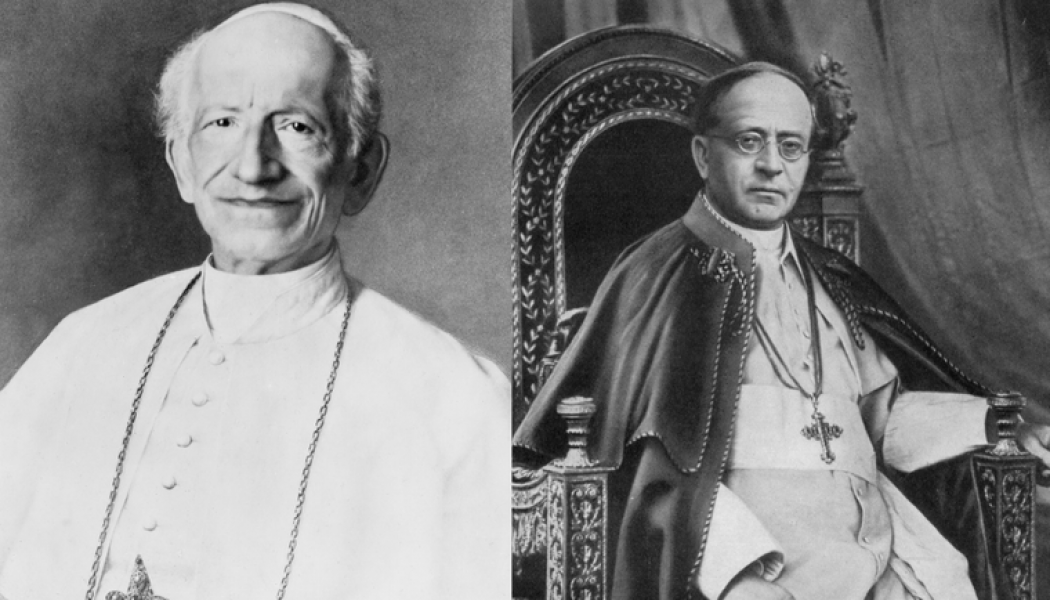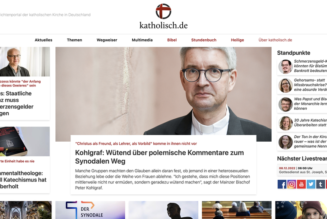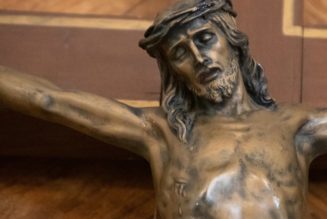
There is a temptation, perhaps unique to Catholics in the United States, to read Pope Leo XIII’s Rerum Novarum (On Capital and Labor), 130 years old today, through a kind of nostalgic haze. It evokes images of working people of Irish, Italian and Polish descent moving between factory floors, packed parishes, a variety of often Church-related social organizations and, of course, the voting booths of great cities, where they made up the backbone of the Democratic Party for generations.
Those images continue to inspire a certain kind of political rhetoric, but much of the substance has passed. The haze and the rhetoric can serve to obscure the fraught context and astonishing boldness of the project of which Rerum Novarum was a part, and exactly 40 years later in a very different time Pope Pius XI picked up and developed. The solid core of that thought is still vital in our even more diverse context.
Leo XIII was the first really modern pope. He was the first pope in a millennium not to find the throne of Peter also that of a temporal sovereign, the Papal States having been abolished with the unification of Italy in 1870. Leo seemed to treat the loss suffered by his predecessor as liberation: He embraced the role of teacher and set out to engage the modern world through rational argument.
As a seminarian, Pope Leo had been recruited into the revival of Thomism and became its tireless advocate. He saw the potential for philosophy to serve again as a preparation for the Gospel, this time for a re-evangelization of Europe and the West in the wake of the first wave of secularization that followed the French Revolution, the Revolutions of 1848, and the rise of often anti-clerical nationalism that immediately preceded his papacy.
During his 25-year-long reign, he issued more than 80 encyclicals on a huge range of subjects and issues. Rerum Novarum is doubtless the most famous, since it inaugurated the modern line of Catholic Social Doctrine.
As perilous as the political and economic state of Europe was in 1891 when Rerum Novarum was written, 1931 was darker still when Pope Pius XI wrote the encyclical Quadragesimo Anno. His commemoration and updating of Leo’s work 40 years later took place in the wake of a devastating worldwide economic depression, only 14 years after the Russian Revolution, and during the incubation period of fascism in Europe.
A quick and superficial comparison of the two encyclicals could suggest that Leo was more concerned about the dangers of socialism and Pius more concerned about the dangers of its opposite, what he called “liberalism.” Liberalism was understood by Pope Leo more in a political context to mean anti-clericalism or religious indifferentism, and he had discussed it in earlier letters. For Pope Pius, liberalism meant completely unfettered capitalism. But Pius was also well aware of the dangers of the extreme left: He had been the papal ambassador to Poland when the Red Army nearly took Warsaw in 1920.
Pope Leo’s concerns about socialism grew out of his worries for the spiritual welfare of workers, tempted by their frequent exploitation at the hands of the wealthy to join Marxist labor unions and political parties. Socialism meant for him the abolition of private property and the absorption of social relations by the state. For Leo, the hope of workers was not in the abolition of property, but in workers’ acquisition of enough property to provide decent lives for their families. He warned of socialism’s focus on the material aspects of human affairs to the exclusion of God. The solution was in the natural right of persons to associate with one another for fellowship and mutual development. This right, the natural, primary status of the family and the related right to own property implied essential limits on the power of the state. These things in turn were grounded in the particular place of man in the order of divine Providence as a being capable of self-direction through rational agency. The perfection of man in his transcendent end, unity with God, is an achievement in freedom.
It is this that most deeply links Leo XIII and Pius XI. While Pius’ economic concerns stemmed from worries about the power of international capital, he was also wary of the state and its tendency to usurp the roles of individuals, families, and associations. Pius emphasized and developed two notions that, while present in Leo’s writing, lacked distinctive names and formulations before Quadragesimo Anno. The first was the notion of social justice, which in the Thomistic tradition had been known as “legal” or “general” justice, understood as what was required for the common good of society. Pius did not actually offer a definition of this idea until six years later in Divini Redemptoris, an encyclical that dealt explicitly with Soviet communism.
There, Pope Pius emphasized that individuals could only properly contribute their efforts to the common good of society if they were adequately supplied with resources. The functions performed by particular persons in the social enterprise need means. So social justice indicated a kind of reciprocity between society and the individual person, with the state supplying individuals with the resources they require, for the sake of the common good.
The second and more famous notion that Pope Pius XI discussed was the principle of subsidiarity. This was related to what Leo had already said about the natural right of persons to associate with one another, although Leo did not use the name. Pius certainly got it from the 19th-century Italian Jesuit social philosopher, Luigi Taparelli D’Azeglio, who had been rector of the Roman College (now the Gregorian University) when Leo XIII had been a seminarian there. The principle is often misunderstood as concerning simply the relationship of higher levels of society to lower ones. The deeper meaning of subsidiarity, however, is that society exists to aid persons in their perfection as free and rational beings, images of God, and not to absorb them. Subsidiarity is the foe of all forms of the exploitation, manipulation or instrumentalization of human persons.
Quadragesimo Anno, in particular, is significant in another way. While Rerum Novarum inaugurated the modern tradition of Catholic Social Doctrine by being its first statement, Pius XI really gave it that official status by choosing to commemorate it in the way that he did.
It was Pius who first spoke of a “Catholic Social Doctrine,” and who first articulated its basic intentions and limits — most importantly, that it was a part of the Church’s teaching authority with respect to morality, as interpreter of the natural and divine law, but not as an expert on society or politics in any technical sense.
The details of social and economic policy are matters for experts on those topics, informed by the principles of rational morality and the Gospel, but enjoying what the Second Vatican Council would later call a “rightful autonomy.” They are the province of rational inquiry carried out and implemented mostly by laypersons, formed by the Church’s moral framework and Catholic social doctrine, and working in business, government, and the academy.
The vexed political environment of our own time and its very different economic challenges have perhaps finally dissipated the nostalgic haze that sometimes surrounds Catholic Social Doctrine and its great founding figures. It remains to fully embrace the Second Vatican Council’s injunction that the lay faithful appropriate and integrate that doctrine into the day-to-day working of social, economic and political life. For it is only in such an appropriation and integration that the promise of human freedom so fervently sought by modern people can be fully realized.
V. Bradley Lewis is an associate professor of Philosophy and fellow in the Institute for Human Ecology at The Catholic University of America.
Join Our Telegram Group : Salvation & Prosperity









